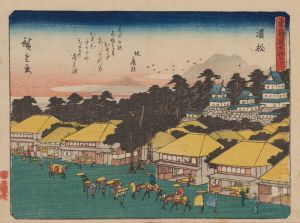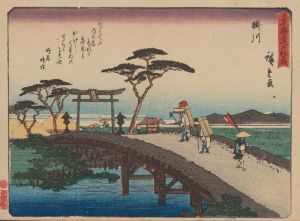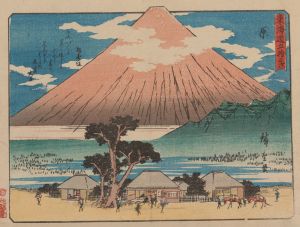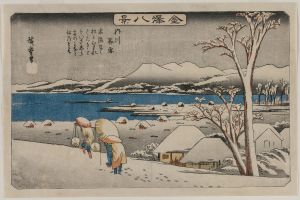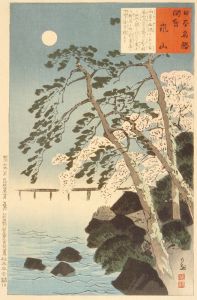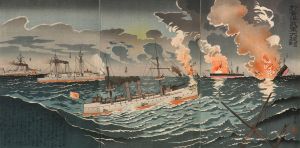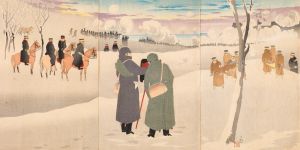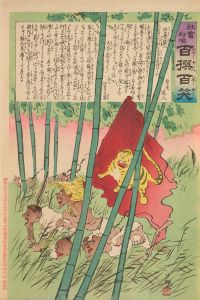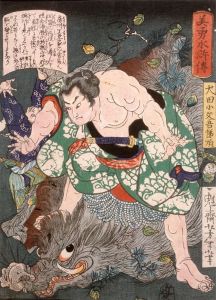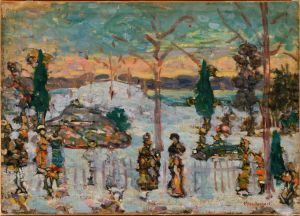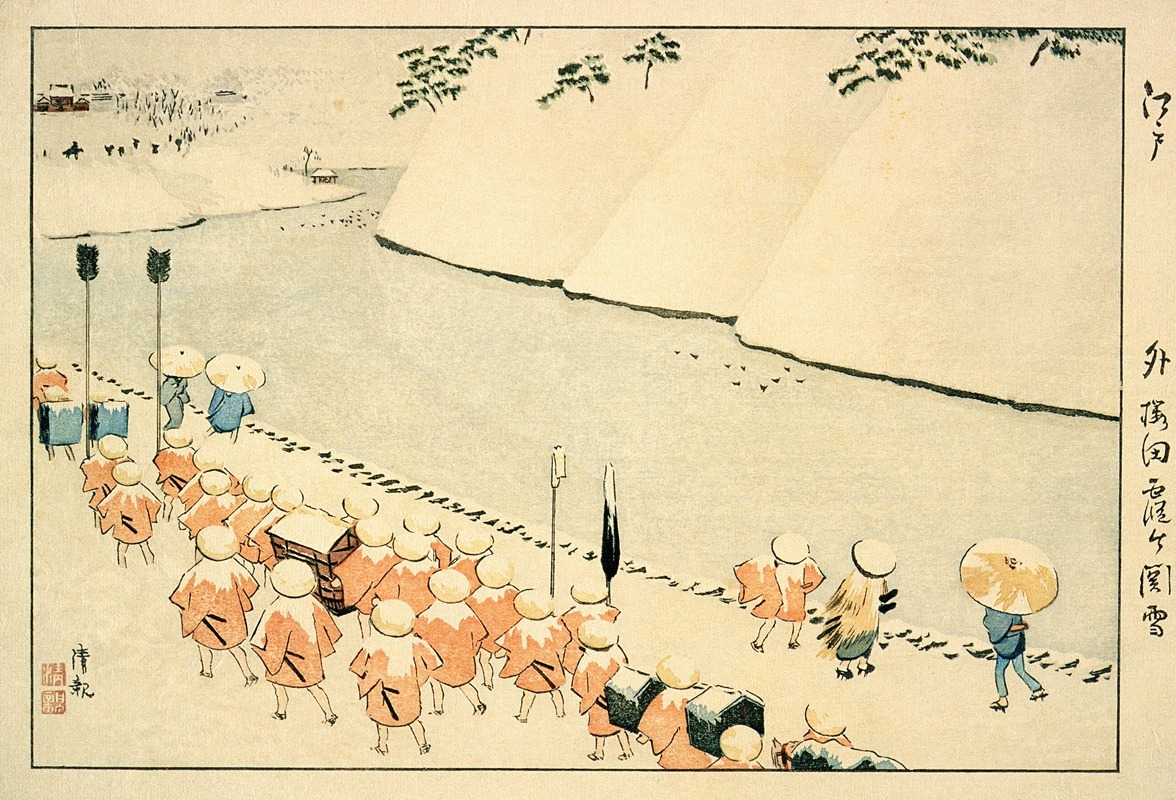
Snow at Soto-Sakurada, Kasumigaseki
A hand-painted replica of Kobayashi Kiyochika’s masterpiece Snow at Soto-Sakurada, Kasumigaseki, meticulously crafted by professional artists to capture the true essence of the original. Each piece is created with museum-quality canvas and rare mineral pigments, carefully painted by experienced artists with delicate brushstrokes and rich, layered colors to perfectly recreate the texture of the original artwork. Unlike machine-printed reproductions, this hand-painted version brings the painting to life, infused with the artist’s emotions and skill in every stroke. Whether for personal collection or home decoration, it instantly elevates the artistic atmosphere of any space.
Kobayashi Kiyochika's "Snow at Soto-Sakurada, Kasumigaseki" is a woodblock print created in 1879. It is part of Kiyochika's celebrated series of works that depict Tokyo (formerly Edo) during the early Meiji period (1868–1912), a time of rapid modernization and transformation in Japan. Kiyochika is often regarded as one of the last great ukiyo-e artists, and his works are notable for their innovative use of light and shadow, as well as their documentation of the changing urban landscape.
This particular print captures a snowy scene at Soto-Sakurada, a location near Kasumigaseki in Tokyo. The area was historically significant as part of the outer moat of Edo Castle, which served as the seat of power for the Tokugawa shogunate during the Edo period (1603–1868). By the time Kiyochika created this work, the Meiji government had taken over the castle, and the surrounding areas were undergoing significant changes as Japan embraced Western-style modernization.
The composition of "Snow at Soto-Sakurada, Kasumigaseki" reflects Kiyochika's mastery of atmospheric effects. The print portrays a quiet, snow-covered landscape, with figures walking along a path, their forms partially obscured by the falling snow. The muted color palette and delicate gradations of tone evoke a sense of tranquility and melancholy, capturing the stillness of a winter day. Kiyochika's use of light and shadow in this work demonstrates the influence of Western artistic techniques, particularly those associated with photography and lithography, which he studied during his career.
Kiyochika's works, including this print, are often seen as a bridge between traditional Japanese ukiyo-e and modern artistic sensibilities. While he adhered to the woodblock printing techniques of the ukiyo-e tradition, his subject matter and stylistic approach reflect the profound cultural and technological shifts of the Meiji era. His focus on urban scenes, often rendered with a sense of realism and attention to atmospheric detail, offers a unique perspective on the transformation of Tokyo during this period.
Today, "Snow at Soto-Sakurada, Kasumigaseki" is recognized as an important example of Kiyochika's artistry and his ability to capture the essence of a rapidly changing Japan. The print is part of various museum collections and continues to be studied and appreciated for its historical and artistic significance.





